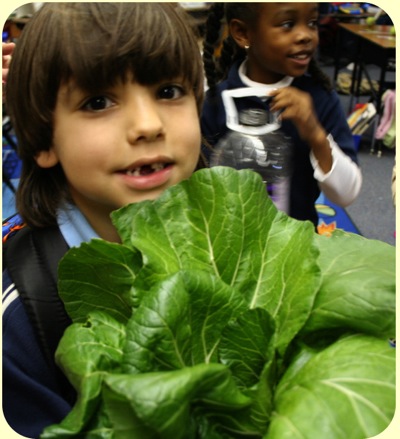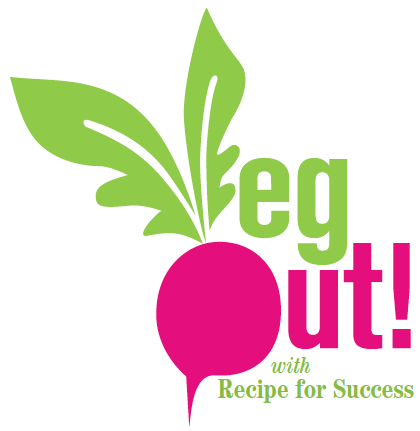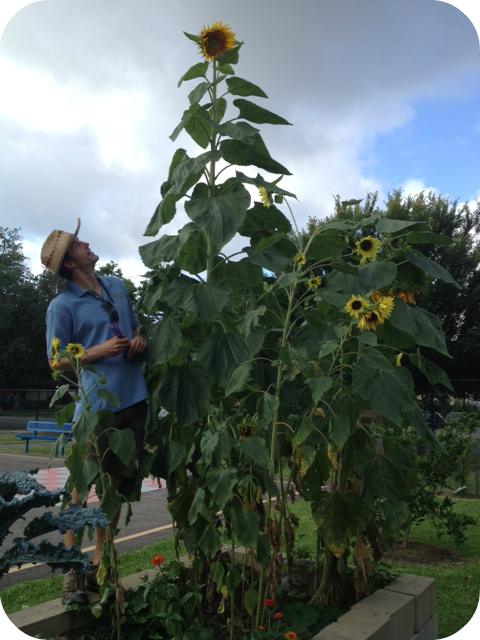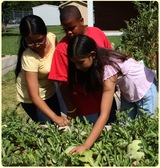Justin says . . .
Behind the Scenes: Summer Garden Preparations
In most parts of the United States, the summer is the prime time for gardening and is the high point in food production. Houston, unique in so many ways, abides by different growing boundaries and the summer is actually the most challenging time to grow a productive garden - with July and August marking particularly difficult times. However, this actually favors the school calendar since the majority of the school community is not regularly on campus to help care for the plants.
This article will discuss some action items to prepare the school garden for the summer and to set the garden up for a successful growing season in the Fall.
1. The Summer Harvest: Many of the vegetables planted throughout the spring will continue to produce into the summer.
Early Summer - Some plants, like tomatoes, squash, cucumbers, corn and some melons will typically finish producing in June and then will succumb to the higher temperatures of late summer. This can be a wonderful addition to summer school programs and a way to encourage active garden maintenance during June.
Late Summer/Early Fall - Other plants like peppers, okra, eggplant, sweet potatoes and some beans will continue to grow throughout the summer and can stay relatively productive. Often times plants - especially peppers and eggplant - will become "dormant" during the very high temperatures of August, but once it cools down again, they will begin producing more fruits. See item #2 below for more information about sweet potatoes.
The Exceptions and Experiments - There are some cool season greens like kale, collards and swiss chard that thrive during the winter but can also survive the summer and produce into the following year once cool temperatures return. During the summer, they are alive but rarely produce an abundance of new leaves. Additionally, beans, especially shelling beans, can be planted in May and keep producing for several months. Other crops like gourds, pumpkins, winter squash, among others, can produce into the summer but their success can be finicky.
2. Garden "Shutdown": Due to the schools' summer recess, high temperatures and other variables of the season, it can be ideal to shutdown the majority of the garden. Here are a few steps to take that will minimize regular maintenance but still keep things healthy:
- Weed Mats/Mulch: Weeds, especially nutgrass, can grow extremely well in a summer garden. Putting down a layer of newspaper and topping it with 3-inches of alfalfa hay is an extremely effective technique at preventing weeds from growing. This has the additional benefits of cooling down the soil (which helps keep the soil ecosystem alive and healthy), slowing down evaporation and keeping more moisture in the soil, and as it decomposes the nitrogen rich alalfa rejuvenates the nutrient balance. Do not remove plants that will continue to produce - tomatoes, peppers, etc. - and instead lay hay around them as a mulch. Leave a few inches of open dirt directly around their stems/base, which will prevent fungus and disease issues that can arise from decomposing mulch.
- Sweet potatoes: Sweet potatoes are a traditional crop favored by the early pioneers of East Texas. Once established, they thrive in the high temperatures of the summer and need little water or other maintenance to stay healthy. Additionally, they produce copious amounts of vines and foliage that act as a cover crop/mulch for beds. The leaves can also be eaten and there is evidence that suggests they can help combat nutgrass infested areas. If planted in May, then they can be harvested from mid-October through November and are usually a highly productive crop.
- Cover Crops: Southern peas (like cowpeas or black-eyed peas) are a legume and serve as nitrogen fixers for the soil. These grow well in the Texas heat, can have productive harvests and also benefit the soil.
3. Summer Maintenance: Even if the majority of the garden is shut down for the summer, it is still very valuable to keep a few maintenance actions in mind:
- Water Schedule: July and August can be notoriously dry months of the year and this coupled with the high temperatures can create very stressful environments for fruit trees, herbs and perennial beds. If possible, set up a summer water schedule for someone to come out once-a-week or twice-a-month to do a deep watering either early in the morning or later in the evening. Fewer "deep" waterings are better for plants because it encourages their roots to grow down into the deeper layers of the soil that will likely hold moisture longer. More frequent, "shallow" waterings encourage roots to stay close to the soil surface, which makes them more susceptible to long dry periods. If fruit trees are younger than two years, then it is extremely important to water them consistently throughout the summer.
- Periodic Check-ins: In addition to watering, it is important to check-in on the garden every couple of weeks to help with weed control and other issues that may arise (pest infestations, water main breaks, crop failures, potential break-ins, etc.)
4. Summer Planting: If the garden has volunteers or other individuals around to perform weekly maintenance, then it could be interesting to experiment with some summer crops. These can be useful for summer harvests but also can help start the school year off with some fresh produce. Here are some options:
- Burpless/Suyo Cucumbers: Plant from seed May, June, July and August.
- Okra: Plant from seed May, June and the beginnning of July.
- Tomato: Plant from seed during June or transplants during July (partially shaded) to produce a Fall crop.
- Summer Squash: Plant from seed throughout August.
- Other crops: Beans, arugula, various herbs, among others.
5. Optimize Garden Space: It is beneficial to have a mix and balance of how the garden beds are prepared for the Summer - some fully shutdown (completely covered in hay); some with sweet potatoes; and some that have crops like peppers, eggplant and others that will keep producing into the Fall. This will allow for a flexible, diverse array of maintenance and planting activities once school begins again.
Participating in the miracle of life--planting seeds and watching them grow into edible fruits and veggies, helps establish a lifelong respect for nature and healthy food sources.

Seasonal Transitions
The growing period between seasons offers a unique time in the garden to explore planting techniques, investigate a diverse array of educational opportunities and enjoy bountiful harvests. This document will primarily focus on the transition from Winter cool season crops to Spring and Summer warm season crops.
1. Timing: In school gardens, this is a critical element during the Spring season due to a defined end to the school year. If vegetables are planted too late then they will not reach maturity in time to produce a bountiful harvest before school lets out. Conversely, weather and climate - particularly cold temperatures - make planting too early potentially risky. A couple of tips:
- Check with the local Agriculture Extension Agent, Master Gardeners or other community members to see when the area's last frost date is and to get recommendations about when to plant certain vegetables. For instance, in Houston, residences inside the 610 loop traditionally plant tomato transplants in the ground on Valentine's Day but for those living outside of the loop it is March 1.
- Incorporate season extenders like frost cloth, row cover or hoop houses to protect warm season vegetables from cold temperatures.
- Start or purchase transplants, which can provide a few weeks jump start on the total season compared to planting them from seed.
- Take experimental risks with succession planting: Take a chance and plant crops earlier than the recommended date. This can result in early and extended harvests, and in case of flowers, sustained color throughout the garden. For instance, if there is an abundance of bean seeds, plant some a few weeks before they typically would go into the ground and see if the weather cooperates.
2. The "In-Between" Crops: There are several cool season vegetables that can tolerate heat and can even survive through the summer. Kale, collards and swiss chard are hardy examples. Other vegetables - like lettuce and radishes - reach maturity quickly, which makes it possible to plant a new crop in February and harvest through April. Additionally, look for certain varieties of lettuce or other vegetables that tolerate heat well or are slow to bolt.
3. Optimize Garden Space: Simply because it is time to plant corn seeds does not mean that all of the kale or lettuce has to be completely removed to make space in a bed. Remove a few plants to clear a small space, add compost and plant seeds. It will be several more weeks before the corn will need the full space, which allows for multiple more harvests of kale that otherwise would have been missed out on.
This idea could also be utilized by creating a transplant area, where a small space is planted densely with a certain vegetable and then after a few weeks the plants are used as transplants for other areas in the garden. This allows for a larger section of the garden to stay in production longer.
Being mindful of the garden space as a whole also optimizes the garden's beauty and educational opportunities by ensuring that there are always plants in different stages of their life cycle - germinating seedlings, maturing plants and flowering, reproducing ones.
4. Special Harvests: Once it is time to remove plants, try to incorporate different plant parts into new recipes. For instance, broccoli leaves are excellent but are rarely harvested while the plant is producing. Before it is removed and added to the compost, harvest all of the leaves for a seasonal soup or saute - they have a similar flavor to collard greens. Other interesting uses involve carrot tops, green onions (before harvesting the bulb), new potatoes, pea shoots and leaves, and numerous others.
Behind the Scenes: Plant Needs
The pure basics of growing plants is fairly simple - soil, water and sun. Indeed, seeds can be randomly dispersed with little care and some of them will grow into productive plants. However, understanding the avenues between these core basics will help optimize the growing conditions and ensure a healthy, successful garden.
1. Plant Spacing: As discussed in the "In-Focus Thinning" video, proper plant spacing aids in overall growth, prevents pest/disease issues and impacts issues like weeds. Plants that grow too closely together will compete for water, nutrients and space, which will result in stunted plants. Unhealthy plants are also more susceptible to disease and pest issues. Additionally, when plants are too close together this limits air flow, which can create prime conditions for fungal growth and pests.
2. Soil Health: The soil ecosystem is a complex environment that is filled with fungi, bacteria, invertebrates and numerous other microorganisms. The synergy and balance of these organisms can have a significant impact on the success of a garden.
Soil health is impacted by:
- Plants have varying nutrient needs with some like tomatoes, broccoli and squash being "heavy feeders" that use a lot of nitrogen and others like legumes that are nitrogen fixers and help restore nitrogen to a given area. Amendments, crop/plot rotation and other soil additives can help balance this issue.
- Components introduced to the soil - Compost, mulch, organic slow release fertilizers and potential amendments that deal with pest and disease issues.
An overarching maxim to keep in mind is that "Healthy soil equals healthy plants." When plants are healthy they can fight off disease and pests, in addition to maximizing production. Additionally it is important to remember that managing soil health is an active, continual process throughout the year and is not limited to a certain season or growing timeframe.
3. Nutrients: As discussed above, different plants have varying nutrient needs. There is an abundance of information out there and it can be easy to become overwhelmed. Here are some basic, standard practices to keep in mind:
- Add a slow release organic fertilizer (like Microlife for Texas residents) each time you plant seeds or transplants.
- Add compost - ideally from the school's compost pile, which is more "alive" than purchased bag compost - at the beginning of each planting season and throughout the season as well. Compost, particularly homemade, is full of bacteria, enzymes and microorganisms that create a rich, dynamic ecosystem that aids in overall plant health.
- Utilize mulch - Mulch prevents weed growth (which can drain nutrients out of the soil), aids in moisture retention by slowing down evaporation, can impact soil temperature (both cooling and warming properties) and decomposes to add nutrients to the soil.
Being mindful of and implementing these three basic practices will help create healthy, productive plants.
Transplants:
Benefits of Growing from Seed
Transplants offer a gardener the opportunity to lengthen the growing season and minimize some of the trials - like limited germination and constant watering - associated with sowing seeds directly in the soil. Using transplants allows a gardener to maximize the growing window of ideal sunlight hours and temperature that will result in a bountiful harvest.
Transplants are typically used for slow growers like broccoli, cabbage, tomatoes, peppers, eggplant and others. In some regions it would be nearly impossible to grow some plants directly from seed due to their lengthy time to reach full maturity. Other plants do not need to be considered for transplants because of the speed of their growth like beans or for root vegetables where disturbing their growth can result in deformed and diminished roots. Still others like squash, lettuce and cucumbers exist in a gray area where they can be transplanted but the benefits do not outweigh direct sowing.
Transplants are widely available at garden centers, big box stores and some grocers. Due to space, time or other limitations, purchasing plants may be the right option for many gardens. However, deciding to grow one's own transplants has numerous benefits and is highly recommended.
Benefits:
1. Cost effectiveness and savings - One transplant typically costs anywhere from $2 to $3 and purchasing multiple plants can quickly add up. A packet of seeds is similar in cost but instead of one plant it contains perhaps 50 to 500+ seeds. Not all of the seeds will germinate and additional costs like pots and soil play a factor, but overall there is the opportunity to save a lot of money.
2. Choice and diversity of what to grow - Garden centers typically carry one or two varieties of a particular vegetable, with limited options offered between different stores. Additionally, in the case of some of the big box stores, their plants are sourced for very large regions and some of the varieties they carry may not be well-suited for the school's particular area. Growing from seed opens up a world of options that include heirloom, open pollinated and new hybrid varieties that create an opportunity for a beautiful and diverse garden.
3. Quality control and overall health and vitality - When grown from seed, one knows exactly when it was planted, the medium in which it grew, what fertilizers were potentially applied and its basic health. Transplants from stores are typically not grown organically and the timing of their growth can be skewed, which results in them being severely root bound, impacting its health and production. Additionally, purchased transplants are typically grown, shipped and stored in tight quarters that can promote disease.
4. Teachable moments - Growing from seed creates numerous teaching opportunities that include various growth experiments, life cycle studies, fosters ownership for students as they care for the transplants, among others.
Growing transplants from seed may not always be an option for a school but if the physical means and time exist, then it is highly recommended. Happy gardening!
How can I make gardening fun for my kids?
The easiest year round crop to grow is heirloom lettuce. Pick a window that gets six hours a day of sunlight and choose any available container, fill it with organic potting soil and drop in 8-10 seeds. In about 2 months, you will have enough for dinner.
Other ideas:
- Designate a special area that's just for your child--a corner of a ground garden bed, or one or two pots for balcony gardeners.
- Create decorations with your child to make their space special. Home made signs, painted stones and pots, and decorative animals or insects are nice.
- Start off by helping your child choose seeds they are interested in growing by using seed catalogs.
- Make a list of important tasks that the child is responsible for: weeding their plot, watering, counting sprouts, and searching for helpful insects. Take pictures to show the growth of the plant compared to that of your child.
Submit your questions about gardening with your children BELOW.










Gardening with children is a great idea,But how can I make gardening more fun for my kids?